Episode 131: STS-58 - Madame La Guillotine (SLS-2)
Table of Contents
Columbia is on the launchpad and we’ve got a whole bunch of life science to get through. And just when you thought it was safe to drop the word “otolith” from your vocabulary.
Episode Audio #
Photos #
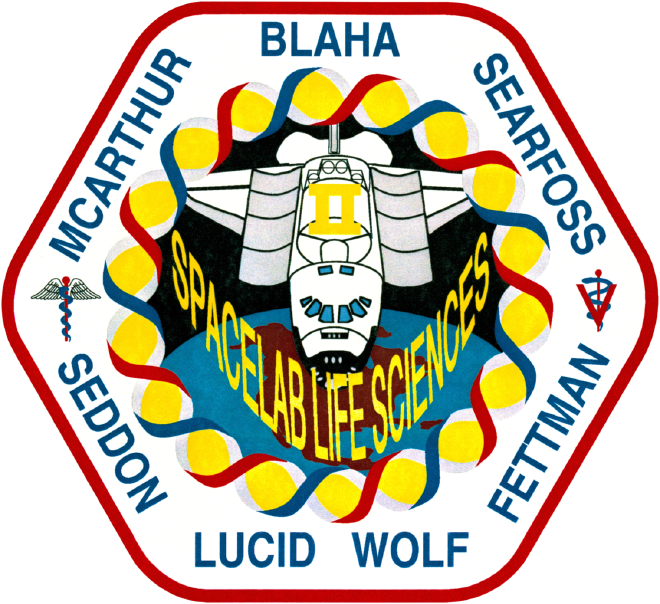
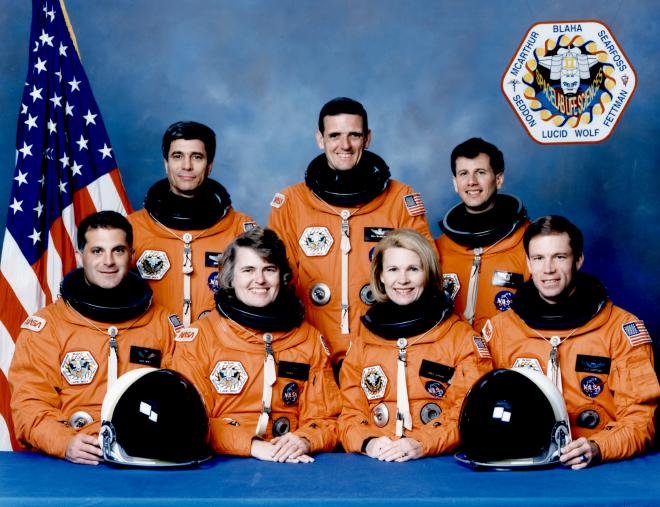
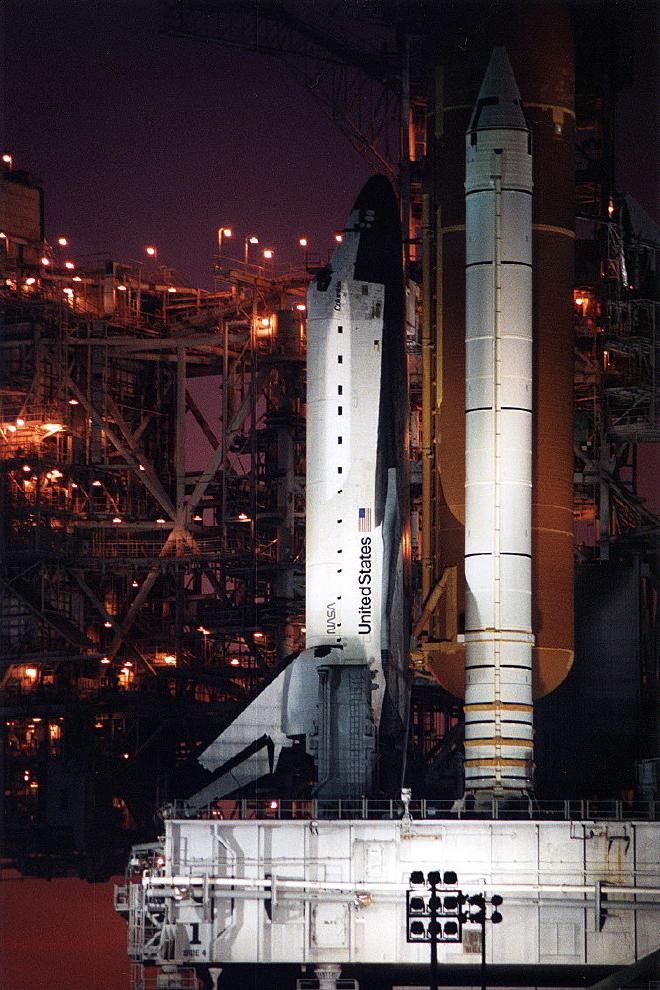
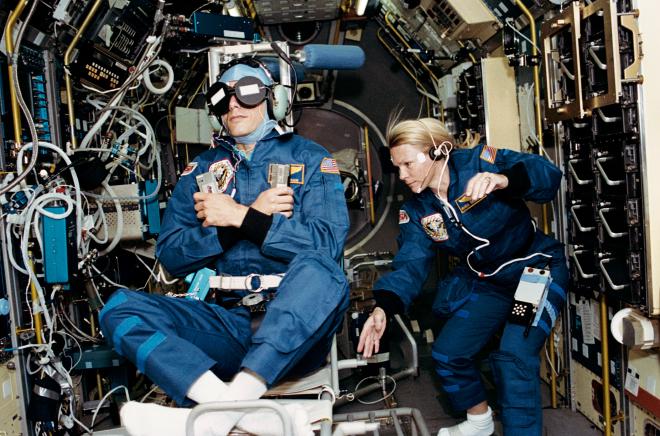
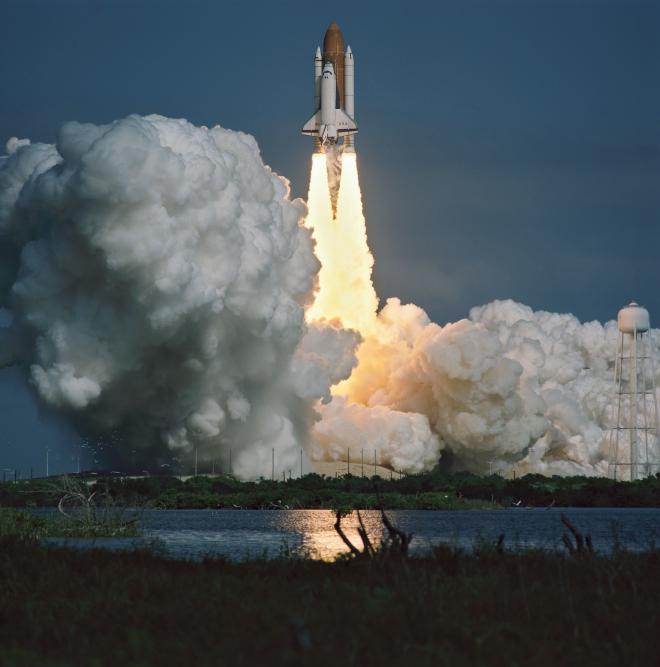
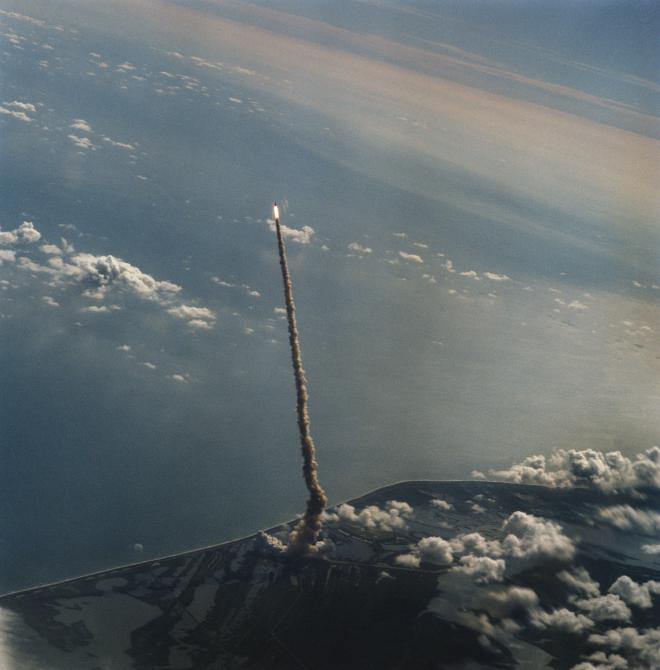
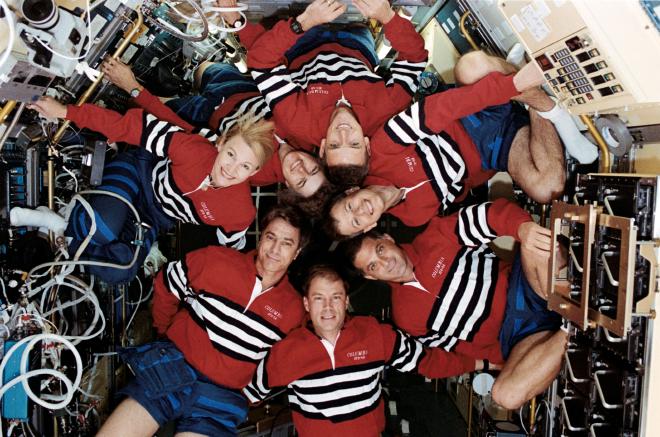
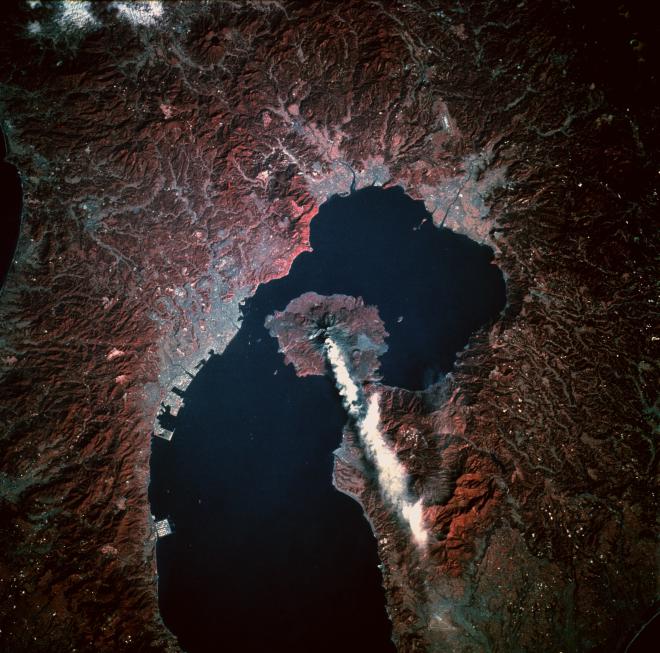
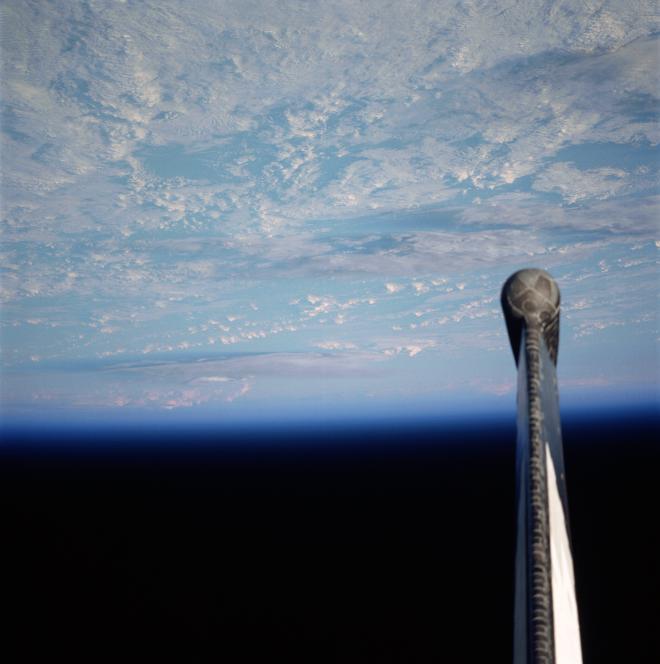
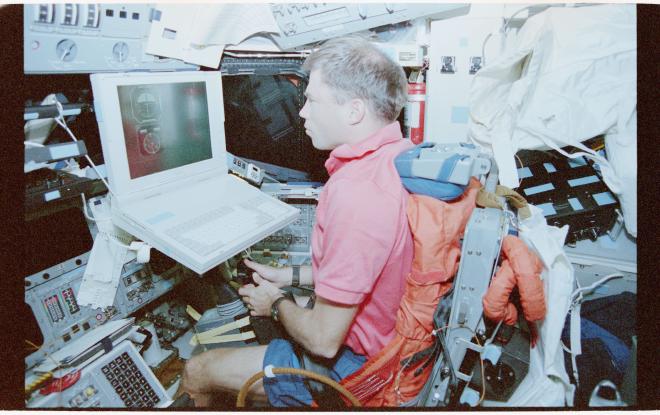
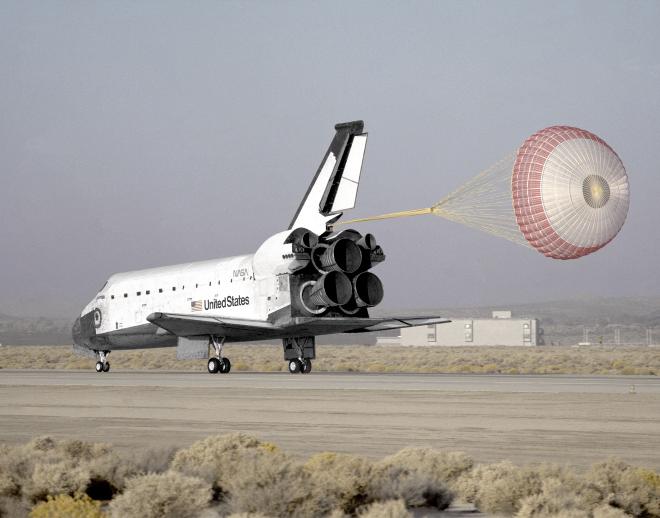
Mission Highlights Video #
If you’d like to see the mission in motion you can check out the mission highlights video here:
Click here for full video details.
Mission Footage #
I’m not sure what this video is because it’s six hours long and I didn’t watch the whole thing! But if you can’t get enough STS-58, this is the video for you.
Click here for full video details.
Transcript #
NOTE: This transcript was made by me just copying and pasting the script that I read to make the podcast. I often tweak the phrasing on the fly and then forget to update the script, so this is not guaranteed to align perfectly with the episode audio, but it should be pretty close. Also, since these are really only intended to be read by myself, I might use some funky punctuation to help remind myself how I want a sentence to flow, so don’t look to these as a grammar reference. If you notice any egregious transcription errors or notes to myself that I neglected to remove, feel free to let me know and I’ll fix it.
Hello, and welcome to The Space Above Us. Episode 131, Space Shuttle Flight 58, STS-58: Madam La Guillotine
Last time, we talked about the action-packed flight of STS-51. We met a new upper stage, looked into why it didn’t quite work as we expected, deployed and retrieved SPAS, did an EVA, and even checked in on our wandering friend Galileo. Today’s flight will be a little less dramatic on the pyrotechnic front, but it makes up for it by further expanding our understanding of how biological systems work in space.
That’s because today, we’re talking about STS-58, which is also known as Space Life Sciences-2, or SLS-2. This mission is the exciting sequel to SLS-1, aka STS-40, which flew back in June of 1991. Also, don’t you love how we’re like 5 sentences into the show and I’ve already dropped a dozen numbers and acronyms on you? SLS-1 was hailed as the first major orbit-based investigation into life sciences since the Skylab program back in the mid-1970s. Though only nine days long, it returned a wealth of data that answered some questions and raised more of its own. SLS-2 would seek to answer even more questions, try to nail down some loose ends from SLS-1, as well as verify its findings. After all, no matter how sophisticated the experiments were, the science crew on SLS-1 only consisted of four people, which isn’t a huge sample size. Granted, with this flight that sample size would only grow to seven, which also is pretty small, but it’s almost twice as big!
And speaking of Skylab, at a planned duration of 14 days, this flight would be the longest space shuttle flight yet, making it the longest American spaceflight since Skylab 4, nearly 20 years earlier. This meant that we’re also going to try out some new systems that might make the task of landing a multi-billion dollar spaceplane after two weeks away from the sophisticated simulators in Houston a little easier. How? Well, how about we just bring a simulator along? More on that later.
The flight would also prove to be somewhat controversial due to some passengers who would be making the ride to orbit from back in the payload bay: 48 rats. This is especially true since due to the demands of the planned experiments, six of the rats would be euthanized and dissected on orbit. I thought it was sort of strange that, from what I can tell, the main objection was about the rats who would not be making the trip home. Strange, because while the other 42 would land in one piece, things weren’t going to go great for them either. I would imagine that a lot of it came down to the unpleasant imagery that people conjured up in their heads when they learned how the rats would meet their end. I couldn’t help but channel Mike Duncan and use it as the episode title. Madam La Guillotine. Regardless of how you feel about the experiments involving the rats, a guillotine is pretty unpleasant image, but NASA worked with animal experts and determined that this was the most humane method for the rats, and would also be best for their research goals. And we’ll actually be flying a veterinarian on this mission, so right up until the end, the rats would be very well taken care of.
When I started a space history podcast did I expect to find myself spending a couple weeks thinking about the pros and cons of experimenting on rats? I did not! But here we are.
Anyway, we’ve got a ton of science to do on both humans and rats, so we should probably go meet the crew.
Commanding the flight is a The Space Above Us favorite, John Blaha. We last saw Blaha commanding STS-43, which successfully deployed TDRS-E in 1991. This is his fourth of five flights, but is actually his last time piloting the orbiter. His next launch will be as a passenger, on his way to a long duration stint on the Russian space station Mir.
Someone who is not flying the orbiter for the last time, is our pilot for today’s mission, Rick Searfoss. Richard Searfoss was born on June 5, 1956 in Mount Clemens, Michigan. Searfoss earned a Bachelor’s in Aeronautical Engineering from the US Air Force Academy, followed by a Master’s in Aeronautics from CalTech the following year. From there, he started pilot training at Williams Air Force Base in Arizona, going on to fly the F-111F with the Royal Air Force in England, and then the F-111A as an instructor at Mountain Home Air Force Base in Idaho. Next, he graduated from the US Naval Test Pilot School and was an instructor at the US Air Force Test Pilot school when NASA came knocking in 1990. This is his first of three flights.
Mission Specialist 1, and Payload Commander for this mission, was Rhea Seddon. We know Seddon as one of the TFNGs, the original class of shuttle astronauts, as well as from a couple of flights, with the most recent being STS-40. This makes sense, since STS-40 was the Space Life Sciences 1 mission. That flight predated the Payload Commander role, which in an oral history interview Seddon said was a shame. Seddon and fellow mission specialist Jim Bagian essentially worked together as payload commanders, which clearly worked well enough, but sometimes it can streamline things to just have one person in charge. With her inclusion on this flight, the scientists behind the life sciences experiments would essentially lose a test subject, since she couldn’t be counted twice. In return, however, they gained the ability to directly compare her data from the previous experiments, as well as the priceless expertise and experience that she carried forward from the previous flight. This is Seddon’s third and final flight, but fear not, Seddon-fans. For this episode I got a bunch of great stuff from her oral history interviews, so we’ll be hearing a lot from her.
Our flight engineer for this mission, who would also be helping out as part of the Orbiter crew, was Mission Specialist 2, Bill McArthur. William McArthur was born on July 26, 1951, in Laurinburg, North Carolina. McArthur earned a Bachelor’s in Applied Science and Engineering from West Point and was commissioned as a second lieutenant in the United States Army, learning how to fly in the US Army Aviation School. After a stint flying around South Korea as an aeroscout team leader, he earned a Master’s in Aerospace Engineering from the Georgia Institute of Technology and returned to West Point as an assistant professor. He became an experimental test pilot after graduating from the US Naval Test Pilot school, before moving to the Johnson Space Center as a space shuttle vehicle integration test engineer. Three years later, he got scooped up in the class of 1990, and this is his first of four flights.
Moving downstairs to the middeck, we can meet Mission Specialist 3, Dave Wolf. David Wolf was born on August 23rd, 1956 in Indianapolis, Indiana. Wolf picked up a Bachelor’s in Electrical Engineering from Purdue, and an MD from Indiana University four years later. From there he did his medical internship at Methodist Hospital in Indianapolis and completed Air Force flight surgeon training in Texas. Wolf worked as research scientist at the Indianapolis Center for Advanced Research, helping to develop a number of new devices and techniques, and was apparently a pretty big deal in the medical imaging field. He developed new signal processing techniques to improve the resolution of ultrasonic images, and figured out how to enhance Doppler radar systems with a new modulation technique. In 1983, he arrived at the Johnson Space Center, working on a number of experiments we’ve already seen fly, including the American Flight Echocardiograph, which we saw on STS-51D, among others. He was selected as an astronaut in 1990, and this is his first of four flights. I gotta say, that’s a pretty impressive resume, but it’s worth noting that he really missed the mark with achieving his childhood goal of becoming a garbageman. Oh, and unlike every other David Wolf I know, as far as I can tell he does not play the piano.
Next to Wolf was another familiar face from the class of 1978, Shannon Lucid. We most recently saw Lucid flying alongside mission commander John Blaha on STS-43, which deployed TDRS-E, among other things. This is Lucid’s fourth flight and she’s still not done, since we’ll see her one more time when we get to Shuttle-Mir.
And last but not least, Payload Specialist 1, Marty Fettman. Martin Fettman was born on December 31st, 1956 in Brooklyn, New York. For college he drove down the road to Ithaca, New York to Cornell University, where he earned a Bachelor’s in animal nutrition, a Master’s and Doctor of Veterinary Medicine degree in nutrition, before moving to Colorado State for a PhD in physiology. Wow, dude knows some stuff. Fettman is one of three payload specialists who trained for this flight, and was the lucky one chosen to fly. We’ll meet one of the others on STS-90, and feel bad for Lawrence Young, who never go to fly. Just one kind of funny note on Fettman, one source noted that he was the quote “first professional veterinarian ever to travel into orbit.” which made me wonder if there have been any amateur veterinarians we just haven’t heard of.
The flight of STS-58 is, unfortunately for the crew, another one of these missions that seems to just keep skipping to the right. It was already delayed a few times due to delays both on Columbia’s previous mission, the German Spacelab mission STS-55, as well as some delays getting STS-51 off the ground. After a couple of months of this, launch day was finally upon us. There was a hold at T-9 minutes while everyone waited for the weather to clear, which it actually did, allowing the count to continue.. until T-31 seconds. That’s when a test with the range safety system failed and the launch had to be scrubbed. The range safety system, aka the remote controlled bomb that would destroy the shuttle if it veered off towards Disney World or something, probably wasn’t a device a lot of people wanted to think about, but it had an important job and it had to work, so that was the end of that launch attempt.
The next day, everyone was ready to try again, until once again the count had to be halted. This time, when an S-band transponder failed. There was a backup transponder on board, but if it failed, then it could take a while to switch to alternative communications methods, which isn’t great. A sort of crazy plan was hatched where someone would just quickly drive out to the pad with a replacement transponder (and I think they actually did this but don’t quote me on that) with the idea being that the crew could install it once on orbit. But eventually they decided against this plan since if the lone remaining s-band transponder went down during ascent, before the repairs could be made, the ground would be out of the loop for up to 15 minutes. Plus, it turns out the weather probably wouldn’t have worked out anyway so I guess it was all a moot point anyway.
Since Columbia had now been on the pad for two days, a somewhat unique problem arose: someone had to go and swap out the rats. The 48 rat passengers had been loaded into Spacelab on the original launch date, and were happy and healthy down there since unlike Spacehab, Spacelab can be powered while on the pad. But for reasons I did not learn, two days was their limit, and someone had to go spelunking down into Spacelab to swap them out. This is always a tricky situation since one false move and you’re either falling, or dropping something, more than 10 meters down to the back of the laboratory. But the new rats were installed with no difficulty.
A few days later, other than a 10 second unplanned hold due to a wayward airplane entering the range, the count proceeded smoothly all the way to zero, and on October 18th, 1993, at 10:53 am Eastern Daylight Time, Space Shuttle Columbia lifted off for the 15th time. Ascent was mostly uneventful, though 45 seconds into the mission, an object was observed falling off the back of the orbiter, flashing as it passed into the engine plume. Analysis showed that the object was likely a piece of thermal insulation blanket from the area near the engines and shouldn’t pose a safety risk. Though I gotta say, when they say things like that I always have to wonder what it was doing there in the first place if they didn’t need it. Any thermal folks care to cue me in?
Anyway, after 8 minutes and 33-and-a-half seconds, the three main engines shut down, and the crew found themselves in a 39 degree orbit, 287 kilometers up. If you’re curious why a life sciences mission with no earth observation goals would bother with a 39 degree orbit instead of just heading east into a 28.4 degree orbit, it was so that the crew could maintain their normal sleep schedule throughout the mission, including the planned landing at Edwards. That would remove one more variable and allow scientists to focus on changes caused by microgravity, and not by weird sleep schedules.
The science got underway almost immediately, thanks to heart catheters fed into the arms of Mission Specialist Lucid and Payload Specialist Fettman before launch. Actually, this had been done before the first launch attempt, so they had just been living with this for a week. Researchers hoped to confirm a surprising result that was discovered when they tried this on STS-40. They had expected the crew’s blood pressure to rise due to all the fluids moving from their lower body to their upper body. Instead, the result from STS-40 crew member Drew Gaffney’s heart was confirmed! Blood pressure decreased, and the heart got a little bigger and pumped a little more blood. Neat.
Wearing the heart catheters was especially tricky thanks to the cumbersome pressurized suits that the crew wore during launch and entry. The distinctive orange suits were added in the wake of the Challenger accident, to give the crew a chance to escape during a mishap, but they weren’t exactly comfortable. In her oral history, Rhea Seddon said: “I hated those things. I hated those things. I hated those things. And you can quote me three times.” OK fine I will!
The suits were derived from the suits worn by high altitude test pilots, who are predominantly male. Taking a suit designed for a big Air Force guy and putting them on someone like Rhea Seddon, who was only 5 foot 2 inches (or 1.57 meters), was never going to work great. She talked about how her arms were barely even long enough to pull the emergency oxygen lanyard. She managed to muddle through, but it just goes to show why it’s so important to have a wide range of people involved in designing things that need to interface with humans.
Just since we’re on this, the suits were also involved in a funny moment from the same oral history interview. Seddon mentioned how with a seven person crew, you’ve got seven suits, seven helmets, fourteen gloves, and fourteen boots all floating around in zero-g, and it was really easy to misplace something. But, as she put it, quote “well, it can’t be anywhere but here. It’s not like I left it out in the car or somebody carried it off someplace.” so they eventually turn up.
While the science crew got to work activating Spacelab, Mission Specialist McArthur got to work fixing a minor problem with the water system. The mission report went into mind numbing detail about this, but suffice it to say that there was some air in the water system. The crews aren’t fans of this since the air just mixes into the water, and they drink it. And with no ability to burp in space, it has to work its way all the way through their systems and can be pretty uncomfortable. McArthur followed the procedure to fix this and directed a bunch of the galley water into the waste collection system, aka space toilet. The next day, he noticed some gross green fluid floating around the odor and bacteria filter. The earlier exercise had flooded the waste collection system, overwhelming the gas-liquid separator. OK fine, McArthur got into the procedure to fix that. Except he misread some part of the procedure. And I think you know where this is going. As he was working, he noticed fluid running through a hose. With one hand, he instinctively pressed the hose up against his chest to try to contain anything about to come out, and with his other hand he reached for the shutoff valve.. but too late. The result? Quote “This happened so fast. Like a gallon of wastewater came out, and the cabin now really smelled.” Yyyyuck. McArthur was, as he put it “just mortified” for creating such a horrible environment for his fellow crew members. But these things happen. After a whole lot of cleanup, the smell dissipated, the waste collection system worked, and everyone could get on with their lives. Poor Bill.
While Bill McArthur contemplates the dynamics of weightless fluids on the middeck, let’s head down the tunnel and see what’s up with Space Life Sciences 2.
As I mentioned, SLS-2 was the followup flight for SLS-1. It would be exploring much of the same territory, seeking to verify initial findings, and answer questions found on the first flight, while surely coming up with more of its own. The main focus was to study how biological systems, in this case humans and rats, adapted to microgravity. To give the crew as much time as possible, for the second time, the back of the payload bay contained the Extended Duration Orbiter pallet, which carried extra reactants for the fuel cells.
I’ve touched on this before, but it probably bears repeating. I think at first glance, it’s easy to look at a spaceflight that focuses on studying the body’s reaction to spaceflight as sort of circular logic. If you were a critic of the space program you could say “hey I’ve got an easy solution, just don’t go in the first place, and then you won’t care what the body does.” But remember, while planning for longer term spaceflight is certainly a goal of this research, microgravity is also being used as a tool. Every creature on earth evolved to operate in a 1-G environment. By studying how they react when that 1-G is suddenly 0-G, it’s possible to learn a great deal about how they work. With that in mind, SLS-2 would be performing 14 experiments: 8 on the crew, and 6 on the rats. The experiments broke down into four areas: cardiovascular (how the heart and blood vessels are affected), regulatory systems (effects on blood, kidneys, endocrines, stuff like that), neurovestibular (how the body orients itself), and musculoskeletal (how the muscles and bones are affected).
One experiment wanted to learn about how red blood cells were produced while on orbit. When humans started flying in space for long durations, doctors were alarmed to discover that crews were coming back with fewer red blood cells. Did this mean that they would eventually run out and there was some upper limit on time in space? Well, no, that turned out to not be the case, but it still left the question of if red blood cells were being made slower or being destroyed faster. SLS-1 was the first mission to prove that the cells were actually being made slower, and SLS-2 was able to confirm it.
Another experiment tested something called the otolith-spinal reflex. If you’ve ever stumbled but managed to get your legs under you again and not fall down, you can thank the otolith-spinal reflex. Apparently, there are nerves that directly connect your otoliths, the gravity sensors in your head, and your legs. When you start to fall down, the otoliths tell the legs to react before the brain even gets the message. So literally before you’re even consciously aware that it’s happening, your legs are already reacting to prevent the fall. By studying how this reflex is affected by microgravity, scientists would gain yet another insight into how the body’s nervous system works. The only problem is.. how do you make someone fall over in weightlessness? Imagine hanging onto a bar up above your head, with your knees bent 90 degrees, so your feet are behind you. At a random time, the bar is going to release and you’re going to fall. If your otolith-spinal reflex does its job, you’ll land on your feet and be no worse for wear. Well, this is exactly what they did in Spacelab. The only trick was to use a bungee cord harness to replace the force of gravity. That one actually sounded like fun until I saw Bill McArthur talk about it in an oral history interview. He said he was surprised to discover just how sensitive his feet had become after days of not using them, making the sudden landing somewhat painful. Ouch.
One thing that would not be tested was the mechanism behind an apparent solution to the problem of space adaptation syndrome. I was actually surprised to read about this so haven’t confirmed if this truly did solve the problem forever, but I’m getting it from Rhea Seddon’s oral history so there’s got to be some truth to it. Apparently, on STS-29, Jim Bagian tried treating himself with an anti-nausea medication normally used by chemotherapy patients.. and it worked perfectly. Doctors on the ground were a little confused by this, insisting that at the dose that crews were using, they should be completely zonked out, as a side effect of the medication. The crews insisted that they felt completely fine, no problem. Maybe it was the leftover adrenaline from the launch, maybe something else, who cares, it works. Doctors then said “well, how about you try taking it later, when the adrenaline is gone, and see if it still works” but, according to Seddon, nobody was going to volunteer to spend their first day on orbit all drowsy (or, presumably, nauseous). Quote “so we don’t know why it works. We just know it works. Go away, we solved the problem.” OK, fair enough! My grandma always told me not to mess with a nauseous astronaut.
The flight proceeded with no major issues, day after day, as the science crew worked in the lab, and the orbiter crew kept the spacecraft happy. But as I mentioned, this was a long mission, so care had to be taken to avoid burnout. The crew worked in a single shift, rather than around the clock operations, and crew members were given rest periods when they could relax and just enjoy the view. Payload Commander Seddon, who had been on SLS-1, also insisted on adding a window to the back of the laboratory module so that they had some sense of if it was even day or night outside. In an interview with the Smithsonian, she recounted a funny moment in the lab that I’m just going to read in its entirety since it’s pretty short: “We had a small, round window in the back of the Spacelab. I glanced out one time in orbit and thought, “What a beautiful cloud-filed sky.” Then I thought “It can’t be a cloud-filled sky. The ‘sky’ up here is black.” So I went over to the window and realized I was looking down at the ocean with clouds floating above it. Through the window it had looked very blue, just like the sky.””
To help with both the crew workload and the orbiter consumables, work slowed down a bit from days 5-11. Since the research primarily depended on remaining on orbit for a long time, it was possible to have some light days in the middle. Since there was only one shift, sleeping was easier too, with some crew members sleeping inside Spacelab. Even with the occasional thumping from the rear attitude control thrusters, it was quieter than sleeping on the middeck. Pilot Rick Searfoss arranged his sleep station under the overhead windows on the flight deck, and left a camera nearby. That way if he woke up and saw something interesting he could capture it and drift back to sleep.
Commander Blaha, who didn’t have a ton to do thanks to a well-behaved spacecraft, volunteered to be the videographer and photographer. This was especially nice for the science crew, who were usually too busy to document their stay in orbit. Though, as Seddon pointed out, quote, “a lot of the video when we got back has his toes in the bottom corners. Bless his heart.”
One other sort of funny note as the days passed was that Pilot Searfoss had volunteered for a blood glucometry experiment, occasionally pricking his fingers to get small blood samples and measure his blood sugar levels. As the mission drew on, and especially with the occasional mistake, he eventually ran out of fingers, and as he told it an oral history, his fingertips got pretty sore, which much have been especially unpleasant in an environment where you mostly get around using your hands. Though it can’t be fun in any environment, and I’m sure that any diabetic listeners are grimly nodding right now, haha.
One thing you may have noticed is that the orbiter crew, who normally stays up on the flight deck, has been participating in the science. This is largely due to John Blaha’s take on teamwork and how a mission should function. In his mind, they were flying for science, and he, along with the rest of the orbiter crew, were there to help in any way they could. Since an emergency deorbit could always be around the corner, they couldn’t do anything that was too invasive or that might leave them dizzy or nauseous, but there were plenty of things that they could do.
That’s a pretty cool attitude, and one that hasn’t really been common among shuttle commanders. And I don’t say that as a knock on other commanders. They’ve got plenty on their plate just keeping the orbiter pointed in the right direction. So I thought it was cool that Blaha made this extra effort.
This approach wasn’t exclusive to their time on orbit, either. As I mentioned, three payload specialists trained for this mission, with only one being selected to fly. Since they couldn’t fit nine people into an office, it might have been an easy choice to banish the three payload specialists to their own office, but Blaha mixed it up. Instead, Lucid, McArthur, and Fettman ended up in a smaller office next door to the other six. And even when Marty Fettman was chosen to fly, Blaha wanted the other two to feel like they were still just as much a part of the team. They continued to train together, pose in crew photos, and Blaha insisted that on launch day, their families got special treatment, just like the prime crew. The result was that while I’m sure they still would have loved to fly, the two payload specialist who stayed on the ground ended up being super engaged and knowledgeable CAPCOMs, who knew every facet of the mission.
One other example of Blaha’s leadership style is the responsibilities he assigned the mission’s Flight Engineer, Bill McArthur. As Blaha tells it in an oral history, two months into training, he noticed that McArthur was really on top of things, and told him “you’re in charge of the computer system.” So if there were any malfunctions while on orbit, it would be Bill McArthur pulling out the procedure book and diving in, a responsibility not given out lightly. Watching Blaha command on these two flights, it seems like his goal was almost to sort of fade into the background and be an invisible facilitator. He was the glue that held the team together, but in Blaha’s mind, the rest of the crew were the stars who really made the mission shine. And I think that’s a pretty cool approach. Especially in a position like “Space Shuttle Commander”, which I’m sure is easy to go to one’s head. While two flights in the left seat is nothing to sneeze at, I’ll be a little sad to see John Blaha move on to Mir.
I’m running a little long, but I wanted to very briefly mention that this was another flight carrying the Shuttle Amateur Radio Experiment. The main goal was to talk to a schools around the world, and contact was made with 17 schools. But the highlight for me was a quick exchange between Columbia and Mir as the two flew past each other. There was literally only enough time to say a quick greeting, and apparently the response from the Cosmonaut crew was to say “ha ha ha, is that you John Blaha?” which for some reason just cracked me up. John Blaha, are you out there??
On flight day 13, with the mission almost over, it was time for some unpleasant business in the payload bay. I’m not going to spend too long on this, but I think the context is important. On flight day 13, six rats were humanely decapitated by a trained expert, Payload Specialist Fettman, and then Payload Commander Rhea Seddon rapidly removed several organs, placing them into special chemicals that would preserve them in the moment. In an effort to make the most of this activity, calls had gone out to researchers around the world, allowing them to request other rat organs and systems to study, but the primary goal of the crew was to preserve the rat’s otoliths, their gravity-sensing organs.
Rats had also flown on SLS-1, and their otoliths were studied on the ground, but that was after reentry and during the process of re-adapting to gravity. By preserving the otoliths at the end of the two week mission, while still in space, it was possible to essentially freeze time and see them before readaptation could begin. The results are actually pretty striking. As are now well aware, the otoliths are unable to properly function in microgravity, making their data less useful to the brain. Researchers found that not only were the rats nerves literally rewiring themselves in the response to microgravity, it happened fast. In only two weeks, there was a clear difference between the flown rats and the ones that stayed on the ground. This was an important result demonstrating the plasticity of the brain and nervous system, and, this is just me speculating, may one day contribute towards treatments to regrow nerves in humans with spinal injuries and other nerve damage. On top of the nerve results, researchers also learned that different parts of the inner ear were affected differently by microgravity, providing valuable insight into how these important systems work.
I’m sure opinions will vary about research like this, and I’m not even really sure myself, but I can tell you that efforts were made to minimize the required number of rats for these experiments, and to maximize their comfort and quality of life during the flight. And while the rats didn’t exactly volunteer for this, I still thank them for their sacrifice to science.
As the mission draws to a close, we can expect this pilot crew to be especially sharp, even with the long duration flight. With shuttle missions getting longer and longer, there was growing concern about the gap in training for the pilot crew. Shuttle commanders and pilots train a lot, in a whole variety of different simulations with different scenarios. And this is especially true in the buildup to a launch. So to suddenly stop, spend two weeks drifting around, and then perform arguably the most demanding part of the job, wasn’t an ideal situation. With that in mind, the Pilot In-flight Landing Operations Trainer, which actually spells out “PILOT”, was developed.
PILOT was literally just a little space shuttle landing simulator that was small and light enough to actually fly on the shuttle. When the crew wanted to practice, they would take it out of its middeck locker, and set it up at the Pilot’s seat, at the front-right of the cockpit. The hand controller for the simulator was actually attached directly to the pilot’s hand controller. A quote-unquote “high resolution color display”, which I’m sure was impressive for 1993, was placed in front of the seat, and the Commander and Pilot could practice the final approach and landing. It seems like a pretty cool setup and makes sense to me, but the result was mixed. According to Blaha in his oral history, he saw some value in it, but didn’t really get much from the simulator. He said he would call it maybe 10 or 20 percent effective. But on the other hand, Blaha said that Searfoss was a huge fan of it, and probably would have pegged it at 90 percent effective. Blaha said, quote “Now Rick Searfoss, he thought it was outstanding, and since Rick’s a real smart guy, maybe he’s right.” I actually don’t know if simulators like this will continue to fly, but I like the idea a lot, so I’ll be keeping an eye out for it.
After nearly two weeks in space, the crew had wrung all the science they could out of the flight, collecting 115% of the data they were hoping to collect. So it was time to head home. The flight’s orbital inclination was chosen such that when it was time to come home, it would be morning, and Columbia would be lined up with Edwards Air Force Base. The choice to land at Edwards was made before even lifting off. Since the science crew would need to be whisked away to additional medical testing, and since it wasn’t viable to have two medical testing teams, and since the weather is a lot more reliable at Edwards, the decision was made to just plan on landing at Edwards. The fact that John Blaha would be landing Columbia after the longest shuttle mission to date and Edwards had nice big open areas was probably a nice bonus.
After an uneventful entry, Columbia touched down, and set the new high water mark for shuttle duration: 14 days, 12 minutes, and 32 seconds. The science crew would be carried out on stretchers to delay their readaptation to gravity, but before that could happen, it seemed that we had one more unexpected test to perform. I’m just going to read this paragraph verbatim from the mission report because I literally laughed out loud, which isn’t a common occurrence when reading old space shuttle mission reports: “A special cooling test to determine if the payload bay purge air could maintain vehicle cooling while the Freon Control Loops were in radiator flow was performed after landing. Normally the vehicle is dependent on the ground cooling unit which interfaces with the FCLs through the Ground Support Equipment heat exchanger. The test unexpectedly occurred when both the primary and backup ground cooling units failed for approximately three hours.”
So yeah, a special cooling test was performed.. because the cooling systems failed! I guess when life gives you lemons, make payload bay air purge lemonade and call it a test in the mission report.
Next time.. I know we just had a special episode only a few episodes back, but our next mission is a big one. STS-61 will be the first servicing mission to the Hubble Space Telescope, tasked with repairing the orbiting observatory that was supposed to be NASA’s crown jewel, but instead became the butt of a joke when a manufacturing defect left it unable to focus. There is going to be a lot to get into for STS-61, so before we do, we’re going to take one episode to go in depth on the mission’s target, the Hubble Space Telescope. How does it work? What is the exact nature of the defect? And how in the world wasn’t it caught? Next time on The Space Above Us: The Hubble Space Telescope.
Ad Astra, catch you on the next pass.
